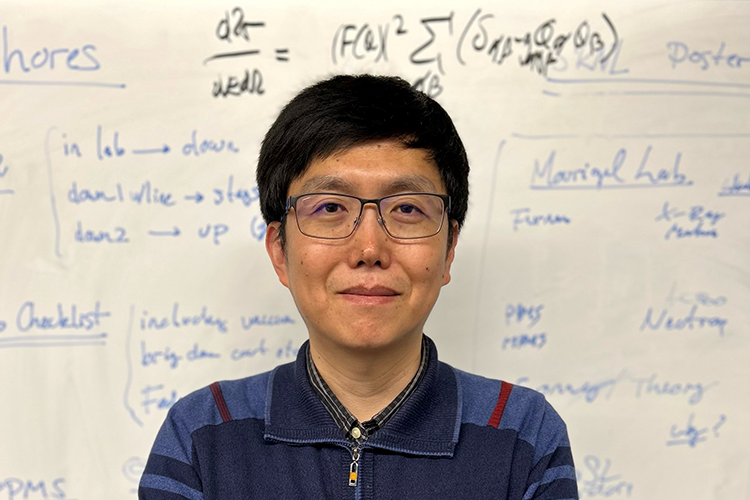IMat Initiative Lead Q&A: Zhigang Jiang
Mar 22, 2023 —

Zhigang Jiang leads the Quantum Responses of Topological and Magnetic Matter research initiative for the Institute for Materials at Georgia Tech. In this role, he leads a team that focuses on fundamental research progress in topological and magnetic matter and communicates their importance, relevance, and significance to Georgia Tech’s research audience. This initiative also aims to leverage fundamental discoveries in quantum materials and explore how these can be translated into quantum systems with new functionalities for spintronics, qubits, and electronic devices. Jiang is also a professor in the School of Physics.
In this brief Q&A, Jiang discusses his research focus, how it relates to materials research, and the national impact of this initiative.
What is your field of expertise and at what point in your life did you first become interested in this area?
My field of expertise is experimental condensed matter physics, focusing on transport and optical properties of quantum materials. I first became interested in this area of research in my junior/senior years of undergraduate study. In 2005, as a part of my transition to a postdoc position, my advisor brought me to Bell Labs in Murray Hill, NJ. He gave me a tour of the Bell Labs invention exhibition hall, where I saw the first transistor, the first solar cell, the first laser, and much more. I truly believe that fundamental material research and innovation can reshape human life with ever-improving device performance and functionality.
What questions or challenges sparked your current materials research?
About 100 years ago, a group of the best physicists invented quantum mechanics. Today, quantum mechanics has been well accepted in understanding the physical and chemical properties of materials. However, how to implement the highly correlated quantum states of matter in real-life applications remains a challenging question. My current research focuses on the characterization of the quantum mechanical properties of emerging topological and magnetic materials and their associated device applications.
Why is your initiative important to the development of Georgia Tech’s Materials research strategy?
This initiative aims to promote the fundamental research and development in topological and magnetic materials and communicate their importance, relevance, and significance to the Georgia Tech research audience broadly defined. This initiative also plans to build an inclusive and broader community of Georgia Tech scientists and engineers interested in utilizing the intrinsic properties of quantum materials in application domains such as nanoscience, quantum information science, novel interfacial electronic devices, microelectronics, soft and hard energy materials, and more.
What are the broader global and social benefits of the research you and your team conduct?
This initiative serves as a Georgia Tech response to the National Quantum Initiative Act, which aims to accelerate quantum research and development in the United States. Quantum materials research is the foundation of quantum information and technology. The topological and magnetic material systems to be explored in this initiative may provide the general research community with a new quantum platform for spintronics, qubits, and other electronic and optoelectronic devices.
What are your plans for engaging a wider Georgia Tech faculty pool with IMat research?
We plan to reach out to Georgia Tech scientists and engineers through workshops (including IMat-organized symposiums/workshops) and joint grant proposals related to quantum information and technology. Our initiative includes ten core faculties in Physics, Chemistry, and MSE. Our goal is to deploy these core faculties as nodes to form a Georgia Tech quantum network that is competitive to address the Nation’s need for quantum research and development.
Laurie Haigh
Research Communications




